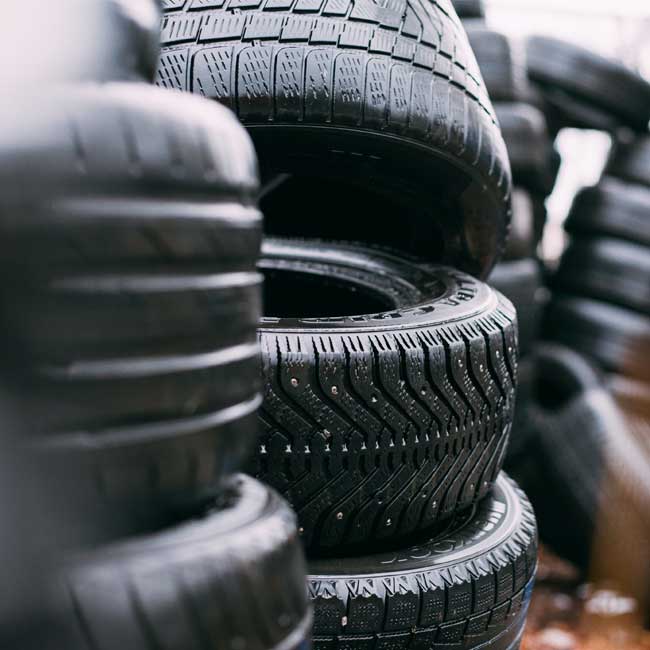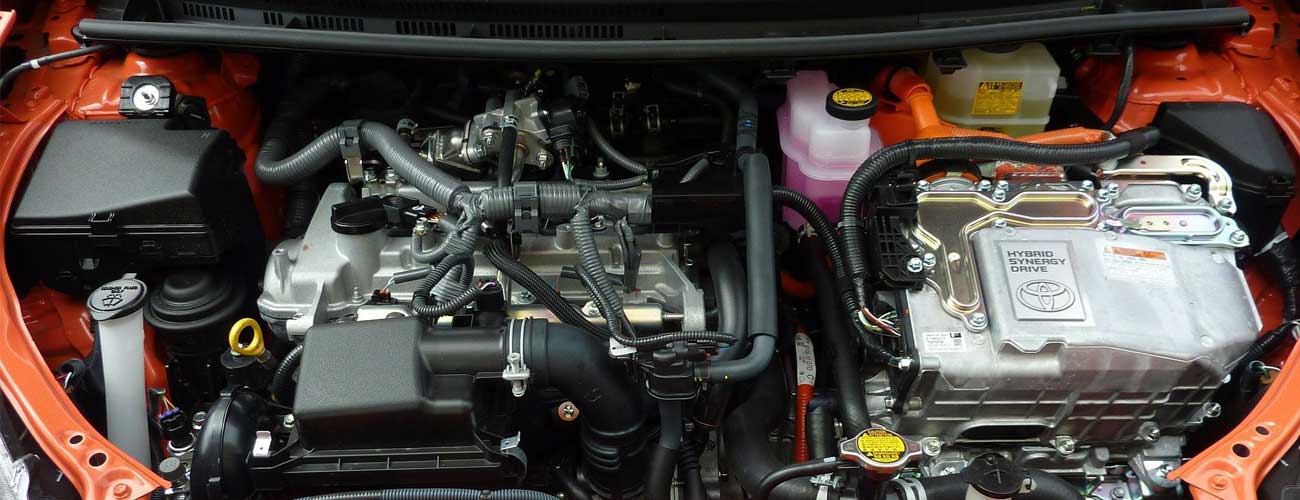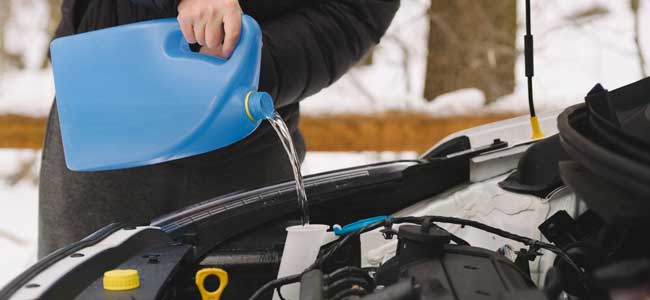We all know that taking care of your car all year round is important but the things you need to do vary with the time of year, as just like us cars need different care during the winter and summer months.
We’ve got another post on what you need to do to look after your car in warmer months so in this one we’re going to cover everything you need to know to keep your car in top running condition during the winter.
There are several general care tips you should follow in order to keep your vehicle roadworthy so before we look at the winter specific ones we wanted to remind you of these.
These include regularly checking your tyres, vehicle fluids, and keeping it clean.
It’s important to check your tyres regularly and we’ve got an in-depth guide for anyone unsure on what they need to be looking for here.
There are three main things that you need to check with your tyres:
You should regularly check the pressure of your tyres no matter the season, to ensure they are at the right level. Correct tyre pressure has a number of great benefits including keeps your car safer, reduces excess wear, and improves fuel economy.
In order to be roadworthy tyres need to have a minimum continuous tread of 1.6 mm around the central three-quarters of the tyre.
You can easily check your tyre tread with a twenty pence piece by putting the coin into the tread and then checking to see how much of the coin is visible. The tread should cover the outer border of the side that is inserted into it. If you can see the outer border then the tread is too low and you should replace the tyre.

Checking the condition of the tyre is a visual check and what you want to be looking for is any cuts, cracks or bulges or other damage.
If you are at all concerned about the condition of your tyres then you can always check them with a professional at Kwik-Fit or other retailers.
You should regularly check the fluids in your vehicle to ensure they are at the correct levels.
You should be checking the:
Before checking any fluids, you should make sure your car is parked on level ground and not on a slight incline or with one side on the pavement as this can affect the readings you get.
You should also ensure that you are checking the fluids when your engine is cold. This is not only to ensure accurate readings but to reduce the impact of accident or injury to yourself by touching a hot engine.

Brake fluid is essential for the vehicle to work correctly, and if your brakes ever feel slow or abnormal then we recommend checking the brake fluid first.
Most manufacturers advise that the brake fluid regularly needs changing, normally around every two years at least.
However, you might also want to check or top up the fluid between these changes.
Checking the brake fluid is pretty straightforward, you should be able to locate the brake fluid under the hood and be able to open the container to see the colour of it and top up if needed. The colour should be lighter and near transparent not cloudy or dark.
Like several of the other fluids there is a minimum and maximum level, and your brake fluid should sit between these.
You should always check the type of brake fluid your vehicle needs as this can vary between models and putting the wrong type into your car can cause further issues.
Most cars have a dipstick, that you can find by looking for a yellow or orange pull tab. You will need to pull this out and wipe it clean with an old cloth or kitchen roll.
Once clean you should reinsert the dipstick fully and let it sit for a few seconds before pulling it out again for an accurate reading.
There should be minimum and maximum lines on the dipstick and if your oil is below or close to the minimum line then you will need to top up the oil but being careful not to fill it over the maximum line.
As well as the level of oil you should also check the condition of quality of the oil. If it has changed from the normal amber colour to a milkier colour or has thickened in places then we recommend changing the oil as well.

When purchasing and using oil you should always check the owner’s manual or manufacturer’s website in order to get the correct oil for your vehicle.
Near the dipstick will be a lid to the oil container that you should use to fill the oil up rather than trying to use the narrow gap of the dipstick entry.
In a traditional combustion engine a lot of the energy is converted into heat and so engine coolant is an important fluid to check.
It’s particularly important to check this with a cool engine as the system runs very hot and is highly pressurised and so could cause severe burns.
There will be minimum and maximum lines on the coolant tank and the level once cool should sit comfortably between the two.
If the level is below the minimum then you will need to carefully open the radiator cap and then top up, making sure not to go above the maximum.
Again, it’s important to make sure that you are using the correct grade of coolant before putting it into the engine.
Power steering fluid is important to ensure smooth and effortless steering and if you find that your steering becomes difficult then this is the first thing we recommend checking.
The location of the power steering fluid varies between cars and so we always recommend checking the vehicle manual or manufacturer’s website to find out the location of this.
Once you’ve located the power steering fluid there will usually be level markings on the side, as with the majority of the other fluids. Most cars have hot and cold maximum and minimum levels, and if the car has been driven in the last eight hours then we recommend using the hot levels but if it has been over eight hours then use the cold levels.
To refill the power steering fluid then you can open the cap on the reservoir and pour it in, checking to ensure you do not overfill it. You might want to use a funnel as this helps you reduce the amount going in and prevents spilling around the tank.
You should not usually need to check your transmission fluid, and in fact in most manual vehicles you are not able to as they don’t have a dipstick for this task.
The transmission fluid will not usually need to be checked or changed as it is generally fitted in the factory and does not require topping up, unless in the even of a repair of service.
We advise against changing your own transmission fluid unless you are a qualified mechanic and instead take your vehicle to a professional if you feel it needs to be topped up or changed as this might indicate a larger issue.

The windscreen washer fluid is the easiest one to check and top up.
It is a simple visual check of the container and then topping up if needed.
There is no minimum or maximum line for screen wash as it is not essential to the running of the vehicle, but it is still an important fluid as a dirty windscreen can reduce visibility and be a hazard for you and other road users.
We recommend checking the instructions on the fluid before adding it to your vehicle as some need water adding as well.
For more information on keeping your vehicle in a safe condition check out this blog.
Another important aspect of vehicle ownership is keeping the car clean.
Not only does cleaning your vehicle ensure it looks its best, but it also keeps it running in top condition and reduces distractions to you as the driver.
We’ve got an in-depth guide on the best practices for cleaning your car but there are some general tips and practises that we will sum up for you here.
You should clean your car regularly throughout the year to avoid damage from things like paint damage from bird poo or sap and to prevent unnecessary hazards for you with dirty windows or lights.
It’s easier than it looks to clean your car and you don’t need any fancy equipment to do this. You can clean your car with a bucket, sponge and cleaning shampoo, though a hose or power washer does make it a little easier.
Before you start to clean the car you should always rinse it down first making sure you get every part of the vehicle rinsed off.
Once this is done you will then want to wash your car, following the instructions on the shampoo or cleaning fluid you have chosen.
You will usually need to add a certain amount to a bucket of water and then use a tool to add this to the vehicle.
There are specialised power washers where you can add cleaning fluid to them, however if you do not frequently wash a number of vehicles these can be quite a pricy investment.
If you are using a sponge or brush to clean the vehicle then you should be careful not to press down and scrub against the paintwork too hard to avoid causing any damage. You can also get a special mitt, which is a glove with a textured pam that you wear, which you can use to clean.
You may need to clean some areas repeatedly to get rid of stubborn dirt, sap or other marks.
We recommend getting a specialist wheel brush when you are cleaning them as these are narrower and allow you to get into the narrow gaps between the spokes of the wheels. They are usually made of a slightly different material so they can really scrub at the dirt that gets caught there.
Once you’ve cleaned the entire vehicle you will need to rinse it off again.
You can pat the vehicle dry with a microfibre cloth or shammy to avoid any smudges from where it dries. Alternatively, you can let the vehicle dry in the sun and then buff out any marks that appear later.
Once the vehicle is dry you might also want to wax it for additional protection from the elements. You should follow any specific directions given on the container of wax you have chosen but in general you should apply a small amount onto a pad and rub this into the paintwork using a small circular motion. After applying the wax to the entire vehicle, you will want to remove it using a soft cloth.
When cleaning the windows you should try to ensure these dry without smudges or marks on them, and you might want to use special glass cleaner to do this.
Not only should you clean the exterior, but you should also keep the interior clean and cleared.
Having a clear interior is important to avoid items flying around if you have to brake suddenly or are involved in an accident and causing damage to the vehicle or injuring yourself or any other passengers.
Keeping your car clean will also give you a nicer driving environment and could even reduce distractions from things like dust or dirt floating around.
You should also clean the interior glass as any interior smudges or dirt on the windscreen or your windows may impact your visibility.
You might think it’s an old wives’ tale that the cold weather can have an impact on your car but it’s actually true.
Batteries work best in hotter weather as they can conduct electricity more easily. This is why most people find their car needs a jump start or even ends up with a totally flat battery during the winter.
To avoid this, we recommend running the vehicle regularly taking it out for at least half an hour once or twice a week to ensure the battery remains charged, even if you do not need to drive anywhere.
Signs that your battery is dying include it taking longer than usual to turn over when you start the vehicle or that the red battery warning light flickers while you are driving or remains on for longer than normal when you start up the engine.
You should always clear any frost, ice or snow from all of your windows, in order to ensure the best visibility.
Not only is this good practise but it’s actually covered in Rule 229 of the Highway Code which state you must demist and clear all your mirrors, clean your lights, make sure your number plate is visible and that all your windows are clear before setting off.
If it has snowed and there is snow built up on your roof then you will also need to clear your roof of any snow. If you leave this on your roof it will fall off while driving and if it falls onto your windscreen it will reduce your visibility endangering you and other drivers. It could also fall off at speed and cause a hazard to other road users. It’s possible if you are driving with snow on your vehicle then you can be stopped and charged for driving without due consideration or using a motor vehicle in dangerous conditions. If you are charged with either of these crimes then you could receive a fine and three points on your driving licence.
When there is snow or ice on the road you should also be careful when driving and drive a little slower to help you avoid the ice and to allow you more time to react if you do hit any.
We’ve mentioned a few times in our blogs and guides about keeping a breakdown kit or winter kit in your car because we think it’s an important thing for every driver to have.
A breakdown kit is essentially the items you should keep in your car in the event of a breakdown. We recommend a few key items for every driver to put in theirs which are:

In parts of Europe, some of these items are a legal requirement but the UK does not currently have a legal requirement to keep any of these in your car.
As well as the above items you can customise your kit for your own family’s needs, tastes and even for the season. For example, in winter we recommend keeping a blanket in the car to provide additional warmth in the colder weather. Or you might want to swap the cereal bars out for a chocolate bar, crisps or your other favourite snack food that doesn’t need to be refrigerated. Those with children might also find it useful to keep additional clothing, like a spare coat or extra jumper for each of them in the vehicle as well as something to keep them entertained if stranded for a period of time.
When the colder weather and the frost hits many drivers find it useful to park their car under cover or in a garage if they have one to reduce the time they have to spend clearing snow and frost from their car. Alternatively, if you do not have sheltered parking to use you might want to invest in a windscreen cover so that this at least will not need to be de-iced every morning.
During the winter it’s important that you also keep an eye out for any animals sheltering under or in your vehicle as small mammals, like mice and cats, are attracted to the warmth of an engine or the shelter a car can provide during rain or snow.
Check out one of our helpful guides or our explaination of leasing to get all your questions answered.
You can unsubscribe at any time